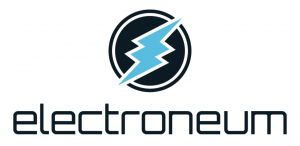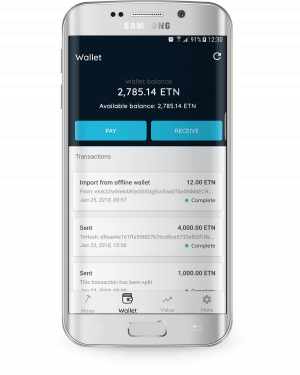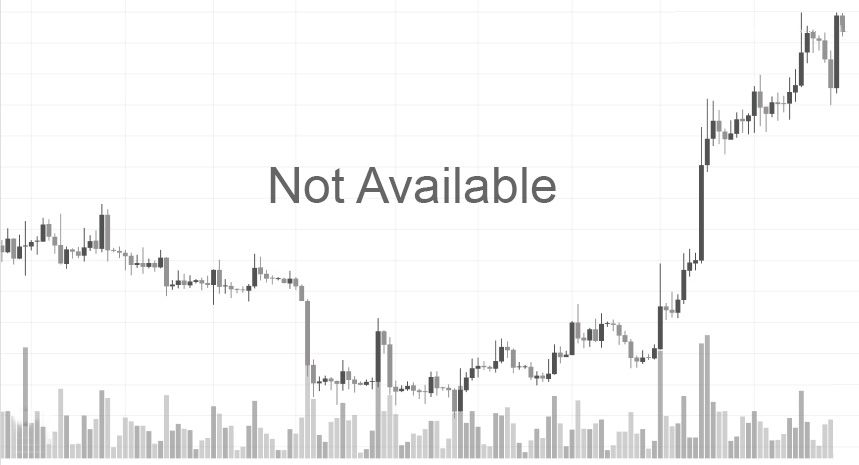Electroneum aims to become a dominant player in the mobile segment of the crypto market, focusing on instant payments on these devices, mobile mining and transactions which are simpler to track and understand.

Electroneum is the cryptocurrency launched in September 2017, moving on to become one of the top 100 cryptocurrencies by its market cap a year afterward (November 2018). The platform focuses on becoming a “light” cryptocurrency which plays the card of being fully functional on mobile devices and stimulating its adoption based on the simplicity of its usage. Its ETN coins are designed to be accessible and functional on both the users’ smartphones and their personal computers.
Considering that the number of smartphone owners has gone over two billion, it is easy to see why Electroneum bills itself as the “mobile cryptocurrency” from day one. Its founders’ vision was to bring the cryptocurrencies closer to the untapped but huge market of smartphone users. In line with it, it was essential to make Electroneum deliver on its promise of simplicity, with the ETN coin acquisition offered as something not much complex from downloading a smartphone app.
What’s under the Electroneum’s Hood?
Electroneum’s is built from scratch with the goal of becoming an everyman’s cryptocurrency. At the same time, the currency was not supposed to deliver accessibility at the expense of what people have come to expect from cryptocurrencies over time in terms of their reliability, security, anonymity and convenience.
This is why the Electroneum was made to run on a tested technology which had the opportunity to establish itself in the market – the blockchain model used by Monero cryptocurrency, which is among the top ten cryptocurrencies in terms of its market cap value as of November 2018. Electroneum’s designers focused on introducing features to make this blockchain largely accessible while retaining the strengths it offered in the privacy domain.
For starters, Electroneum features the implementation of the CryptoNote algorithm which allows for the creation of multiple one-time keys from a public key whenever peer-to-peer payment takes place. Electroneum implemented the system of stealth addresses, which prevent insight into balances on the users’ wallets by means of performing a simple search. To avoid identifying the sender, Electroneum will generate a single-use public key that hides the link between the user’s wallet and the balance on them. With its ring signature technology, several signatures are created with the same private key and linked together. All possible senders which can be part of the transaction are listed, making it impossible to identify the private key which was used on a particular occasion.
The private view key linked to the recipient’s wallet serves to receive funds. Finally, the funds can be freely used by the recipient with the help of a private spend key, without publicly referencing the recipient, sender or the transaction amounts. At the same time, the transactions can be verified by the third parties conducting an audit after the public view key is shared by the sender.
Electroneum’s transaction system uses dynamic fees which are determined based on the network traffic rates. A majority of the blocks carries less than 0.2 ETN in fees, with new ones being added every minute.

Electroneum Mobile App
Inner workings of Electroneum largely reflect what its creators perceived as the currency’s goal in the crypto world: making this cryptocurrency accessible to an average person who lacks both special hardware and high-level technical expertise. Its mobile application is designed to facilitate mobile mining among the casual users, making this feature a trump card which Electroneum promotes on each occasion.
The app is designed to give its user access to a phone-based digital wallet with full functionality when it comes to sending and receiving ETC coins. As of 2018, the app is available for both Android and iOS, recording more than one million downloads in total so far. In addition to allowing the user to get their hands on coins, the app is supposed to make it easier to spread the word about Electroneum with the incentive rewards program. Persons who invite five new users to use the application are eligible to participate in the referral program in which the referrer gets a 5.00% bonus on ETN coins based on what the referrals manage to mine. Considering the ubiquity of mobile devices, how come that a functional mobile mining has not been implemented earlier? The answer lies in the innate technical difficulties with turning mobile phones into adequate blockchain running platforms, which the Electroneum sought to overcome with a technological trick or two.
Getting ETN Coins on a Smartphone
Now, the first obstacle to using a smartphone as a mining tool (or a generally “comfortable” environment for blockchain for that matter) is the drain on limited resources the phones have in terms of power, bandwidth and storage capacity. Using the standard blockchain mining algorithms for mining with smartphones has been shown to bring about poor performance, heating of mobile devices and faster battery drain. At the same time, phones have issues with handling the amount of data the blockchain needs, making it necessary to connect them with external storage devices which may be an impractical solution.
Electroneum gets around these issues by making your smartphone’s CPU the backbone of its “simulated mining” system. This means that the Electroneum app will compute how many coins could be mined based on the phone’s CPU capacity and give the users coins for it without actually using the device’s power to engage in real mining. In that sense, the app functions as a sort of gateway for a coin reward program and a tool for recruiting users for the genuine ETN mining which is done on PCs.
While the mobile mining will not work in the sense that it will allow the user to actually verify new blocks, the rewards in form of real ETN coins are still available. Based on the CPU power, the phone gets the hash rate and appropriate amount of ETN coins which are sent to the owner’s wallet. At the same time, the use of the CPU prevents the scams with simulated app iterations which could be used to get access to free ETN tokens.
Using the simulated mining system means putting less pressure on the mobile device which runs the Electroneum app. This results in prolonging the battery life and requiring much less bandwidth and storage resources to handle the needed data. The data will only be used to check the account balance and transaction-related information with servers. Electroneum’s focus on enforcing the minimum use of data will arguably make it possible for the users in the countries with expensive internet to engage in mining without having to worry about incurring significant costs.
ASICs or No ASICs?
When it comes to mining done on computers, Electroneum originally attempted to bypass the advantages the miners armed with ASICs (application specific integrated circuits) enjoy by creating a blockchain which can be mined with standard hardware such as CPUs. This was supposed to make mining more accessible to regular users.
Yet, in May 2018, Electroneum underwent a fork which introduced ASIC-resistant code to it by moving over to CryptoNight v7 algorithm. Soon afterward (in July), the fork was reversed with the ASIC miners being reintroduced as this prevented the miners from mining Electroneum in waves. Doing this prevented malicious miners from mining ETN in waves, thus causing longer block mining times.
Making Transactions Easier to Understand
In line with the Electroneum’s drive to make the cryptocurrencies more accessible to the general public, its ETN token is designed to be used in the manner as close to “real money” as possible. This means making it easier to understand transactions made with it by focusing on smaller (micro) transactions and getting rid of numerous decimal places involved in it. The Electroneum designers like to cite the example of the price of everyday items such as hamburger of coke. Instead of having their prices designated as “0.000-something”, Electroneum aims to avoid confusion by having only two digits after the decimals. With this system, the goods people pay for on daily basis will have their prices in Electroneum shown as resembling those with the fiat currencies the customers are familiar with (e.g. having the price of 20 ETS or 35 ETS for a product).
By making the transactions easier to understand and track with the focus on full coin values instead of fractal ones, Electroneum hopes to put some wind in its mobile mining sails as well. Knowing that mobile mining serves to give the users the taste of the “real” mining on their PCs, the coin rewards that go with it would arguably look more psychologically “attractive” if showing the values without too many decimals.
Promoting Instant Payment System with Electroneum
Putting Electroneum coins into one’s wallet serves one more important function: it is supposed to support the currency’s instant payment system which is expected to eventually deliver real-time payment confirmations from the vendors across the globe. It is built for micro-transactions whose speed is supposed to go beyond what the blockchain technology is capable of now, and make it compete with the dominant payment processors in use today such as Visa or PayPal.
Electroneum’s system seeks to address what is perceived as slowness of the blockchain in handling the purchases made with cryptocurrencies. Instead of forcing the users to wait too long on the transaction verification on the blockchain, Electroneum was designed with an API system which allows it to act as a third party managing secure transaction between the customers and sellers. In this role, the Electroneum platform becomes a payment gateway with its blockchain operating in the background. In practice, it should work like this: a customer sends ETN coins to the seller, with Electroneum system verifying transaction for both parties in real time. In the background, the same system earmarks the funds in the customer’s wallet and prevents them for being reused for payment on other occasions. Immediately afterward, the reserved funds should begin their transfer to the seller’s wallet via the Electroneum blockchain.
If the transaction is unsuccessful, the Electroneum system will repeat attempts at completing it until this is achieved. While the transactions are verified in real time, the transfer of funds to the seller’s wallet is usually completed within an hour. Electroneum counts on the widespread use of mobile phones as the means to facilitate and promote the adoption of this tech. Sending and receiving micropayments via phone can also be arguably beneficial for the users in developing countries in which large segments of the population have better access to mobile phones than they do to banking services.
What remains to be seen, however, is how Electroneum will fare in the competition with the likes or Ripple, Stellar and Dash which also promote instant payment as their selling points.
Going for Online Gaming and Gambling Markets
With the more widespread adoption, Electroneum’s founders hope to eventually turn the ETN currency to a regular means of payment in the domain of online gaming and gambling. Based on this vision, in-game currencies used for game-based purchases or received as rewards will be swapped for ETN coins which will, in turn, be exchangeable for other cryptocurrencies or fiat money. Designing a gaming ecosystem around the in-game cryptocurrency should stimulate the gamers to play more as well as make it possible charge fees for the handling of crypto coins in games.
At the same time, Electroneum plans to become the currency of choice for the majority of gambling websites. Instead of having them accept only the currencies which can be harder to obtain outside the U.S. (such as Bitcoin), Electroneum hopes to bring down the prices of coin adoption and make gambling more accessible to people in other parts of the world.
ETN History and Availability
Electroneum is often described as the first cryptocurrency to come out of the United Kingdom. The team behind it was helmed by Richard Ells, with James Atkinson and Dean Cole serving as its prominent members. Ells is a co-founder of the digital agency SiteWizard and Retortal social media management platform.
Back in October 2017, the Electroneum ICO managed to raise USD 40 million.
Number of ETN coins in circulation as of November 2018 is more than 8 billion ETN, out of the planned maximum of 21,000,000,000 coins. In the same period, the coin’s market cap stood at USD 139 million, down from almost USD 1 billion it carried in early 2018. Electroneum is available for trading on several crypto exchanges, like KuCoin.
